So, you’ve been hearing all about Linalool terpene effects lately and you’re feeling a little left out of the loop? Well, fear not because you’ve come to the right place.
This isn’t your average chem class chat about C10H18O. Instead, we’re here to lift the veil on Linalool, the unsung hero of your favorite fragrances and flavors.
But before we dive headfirst into the world of Linalool, let’s take a quick detour through terpene territory.
Terpenes are the aromatic compounds behind your favorite plants. They’re what gives that lemon its zest, that pine its punch, and that lavender its “Ahhh…”
And now that you’re all caught up on Terpenes 101, let’s get back to our star of the show, Linalool. In this blog, we’ll dive into everything you need to know about this relaxing, aromatic compound. From what it is, where it’s from, and why we love it — stay tuned for all of the who, what, where, and why.
The Aromatic World of Terpenes
So, what makes terpenes special? Terpenes are like the Beyoncés of the plant world – natural, powerful, and they have a whole lot of range.
They’re not just your average compounds. Rather, they’re Mother Nature’s perfume, the not-so-secret ingredient behind that irresistible citrusy smell in your morning cup of Earl Grey or that calming scent wafting off your lavender sleep spray.
To sum it up simply, terpenes have this incredible superpower, giving them the ability to teleport us to different places, times, and moods with just a single whiff.
The Role Terpenes Play in Plants
Now, as phenomenal as terpenes are for our senses, they’re not just strutting their stuff for our benefit.
For example, terpenes play a crucial role in plant defense. They repel pesky predators and lure in helpful pollinators. Additionally, each plant has its own diverse terpene profile, kind of like a signature perfume, helping it to survive and thrive in its own way.
So, next time you’re lost in the floral aroma of a rose or the invigorating aroma of eucalyptus remember, it’s not just about you – there’s a whole world of plant defenses going on there. But hey, who said science can’t smell fabulous?
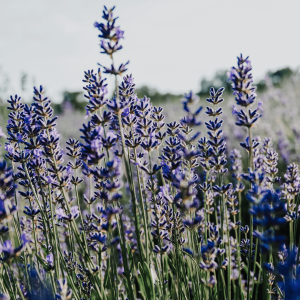
Linalool 101: The Basics
So, let’s begin our discussion surrounding the topic of today: Linalool.
If Linalool were a person, you’d probably call it the life of the party. You know the type, the one that’s in all the best blends, bringing the calming vibes and making everything smell like a dream.
Scientifically speaking, Linalool is a monoterpenoid and has been used in traditional medicine for its sedative and anti-inflammatory effects. But let’s drop the lab coat lingo — in plain English, Linalool is nature’s chill pill.
Linalool is a bona fide globetrotter, popping up in over 200 types of plants. You can find it in mint, fungi, citrus fruits, and even cinnamon and birch trees. So, whether you’re sipping a mojito or munching on a cinnamon bun, you’re enjoying a taste of Linalool.
No wonder this aromatic maestro is a hit in the world of weed and a favorite in the perfume industry. So, the next time you take a deep breath of your lavender-infused essential oils diffuser, spritz your citrusy cologne, or smoke on some Zkittlez, remember, you’re experiencing the magic of Linalool.
Scents & Sensibility: The Aroma of Linalool
Sometimes linalool can be sweet and floral. Other times, it’s spicy and sharp. It can even be woody and rich.
Needless to say, Linalool is a bona fide chameleon, changing its scent profile depending on the environment and the nose that’s sniffing — because yes, your take on scents can be different from somebody else’s.
Yet, the perfume industry has a soft spot for Linalool, not just because it’s a jack of all trades. Its versatility and subtlety make it a perfect base note for many fragrances. Whether it’s that expensive bottle of perfume you save for special occasions, that essential oils collection that’s meant to be calming, or that everyday body spray you love, chances are, Linalool is working its magic in there.
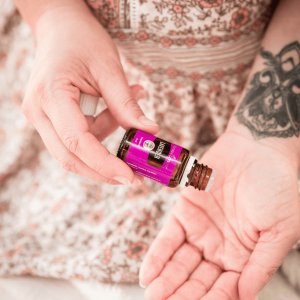
Linalool in Cannabis: The High Life
Now that we’ve sniffed out the basics of Linalool, let’s move on to its role in our favorite herb — the beloved cannabis plant.
The Role of Linalool in Cannabis: The Unsung Hero
The cannabis plant is a regular Picasso, painting a complex portrait of terpenes and cannabinoids. And nestled among these compounds is a terpene known as Linalool.
Despite not being as well-known as cannabinoids like THC or CBD, Linalool is no wallflower. It has a strong hand to play in shaping the aroma of various cannabis strains.
Next time you’re kicking back with an eighth of Forbidden Fruit or a dose of Do-Si-Dos, that calming, floral hint in the background? That’s Linalool, subtly turning your cannabis experience up a notch.
But remember, Linalool also brings potential therapeutic benefits to the table, like neuroprotection and anxiety relief. So, it’s not just a pretty scent!
Synergistic Effects with Other Cannabis Compounds: The Power of Teamwork
You’ve heard of power couples, right? Well, get ready for the ultimate power couple in the medical cannabis front: Linalool and cannabinoids. This dynamic duo works together to create what’s known as the “entourage effect.”
In simple terms, the entourage effect is the idea that the compounds found within cannabis—namely the cannabinoids and terpenes—work together within the endocannabinoid system to influence the overall psychoactive effects of the plant. In other words, each compound (terpene or cannabinoid) has its own superpower, but when they team up, they create something even more powerful.
So, when Linalool is singing in harmony with cannabinoids like THC or CBD, the result is a symphony of potentially enhanced therapeutic effects, like pain relief and reduced anxiety.
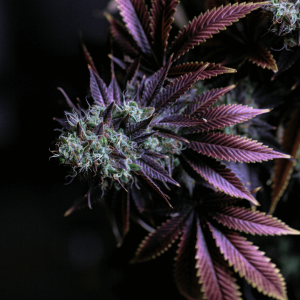
The Linalool Effect: A Deep Dive
If you’re anything like us, you understand that it’s easy to get lost in Linalool’s effects. If this were a movie, Linalool would be the mysterious protagonist with hidden depths and unexpected skills.
It’s not just about hints of lavender or notes of citrus — Linalool could be the key to your upgraded wellness routine.
Detailed Analysis of Linalool’s Effects
Now, let’s don our metaphorical lab coats and take a peek into the science of Linalool, or more specifically, Linalool terpene effects.
Linalool has several wellness-related effects that go beyond just making your nose happy. For instance, its therapeutic benefits include anti-inflammatory and analgesic properties, meaning it could help with pain and inflammation.
Even more, Linalool is a chill inducer. It serves as a sedative, calming your mind faster than a yoga session or that chill lo-fi beats playlist you love. Insomnia? Anxiety? Linalool could be your defense against life’s greatest let-downs.
But that’s not all. In fact, Linalool is also studied for its potential neuroprotective effects and potential in battling neurodegenerative disorders. It’s like the Superman of terpenes, but with a much better fragrance.
Scientific Studies Supporting Linalool’s Effects
Now, we’re not just blowing smoke rings here. Science backs up these claims, making Linalool the real MVP of the terpene world. Here are a few examples:
- In a study published in the Journal of Phytomedicine, Linalool demonstrated powerful anti-inflammatory and pain-relieving properties.
- On the sleep front, a study in Frontiers in Behavioral Neuroscience found that Linalool’s sedative effects could potentially be used to treat diverse sleep issues.
- Finally, a study in Neuropharmacology explored Linalool’s neuroprotective role, suggesting it may help ward off degenerative brain conditions.
So, there you have it. Linalool is not just for sensory purposes but it’s a powerhouse of potential wellness benefits. But remember, it’s always best to consult a healthcare professional before adding Linalool to your wellness routine.
Linalool for Anxiety & Stress: The Chill Pill in A Terpene Form
Now let’s take a moment to talk about one of Linalool’s greatest superpowers — its role in anxiety and stress relief.
We all have those days when everything feels like a struggle, right? Your to-do list is longer than a CVS receipt, your boss is breathing down your neck, and life is throwing curveballs like a major-league pitcher. Well, don’t stress. And while we know that’s easier said than done, Linalool might just be the chill pill you’re looking for!
Here’s a fun fact for you… You know those lavender essential oils you sprinkle on your pillow for a serene night’s sleep or that you sniff in lavender aromatherapy sessions? Well, Linalool is the main active component in them!
Studies have shown that Linalool terpene works as a potent sedative and anxiolytic agent, helping to lower stress levels, increase positive mood, and ease anxiety. So, when stress hits, Linalool essential oils throw the knockout punch.
But wait, there’s more! Let’s bring in some real-life anecdotes and scientific evidence to back up our claims…
Picture this – you’re chilling in your living room, taking a hit from your favorite strain of cannabis packed with Linalool. Within moments, you feel a wave of calm washing over you, your racing thoughts are slowing down, and the world doesn’t seem so bad after all. That’s not just your imagination playing tricks on you.
A 2018 study published in a Frontiers in Behavioral Neuroscience journal found that inhalation of linalool vapor can reduce anxiety levels in mice. Think of it like a chill-out playlist for your brain, reducing the volume of any anxiety-inducing thoughts.
Needless to say, Linalool isn’t just a pretty smell. It’s the potential anxiety-busting, stress-reducing, mood-lifting superstar of the terpene world. Now, go ahead and enjoy that Linalool-infused moment of zen. You deserve it!

Linalool & Sleep
With all the powers that Linalool has, there’s one that really stands out. That is its ability to send you off into the land of dreams.
That’s right! Linalool could be the sandman’s little helper you’ve been waiting for.
Benefits of Linalool for Sleep
You know those nights when your brain decides to start contemplating the unsolved mysteries of the universe or relive your most embarrassing moments from high school? Yeah, we’ve all been there.
Well, Linalool can help shut down that unwanted late-night brain activity. It’s like a lullaby in terpene form, helping to quiet the mind, relax the body, and set the stage for a restful, restorative night’s sleep.
In fact, studies, like this one published in Phytomedicine, have shown that Linalool can increase the duration of sleep. So, not only can it help you fall asleep, but it can help you stay asleep too!
Linalool vs. Traditional Sleep Aids
Now, we already know that you’re asking, “Why choose Linalool over my trusty sleep aid?” Great question, and we’re glad you asked!
Traditional sleep aids, while effective, often come with a laundry list of side effects like dizziness, dry mouth, and daytime drowsiness. Not to mention, there’s the risk of dependency, which can be a serious concern for many people.
On the other hand, Linalool, being a natural component of many essential oils, offers a gentler, more natural approach to achieving sleep. Plus, it comes with an amazing aroma and absolutely zero hangover.
So, next time you’re counting sheep, consider giving Linalool a try. It might just be the ticket to your sweetest dreams yet.

Linalool’s Impact on the Immune System
Now it’s time to turn our attention to another secret superpower of Linalool – its potential impact on our immune system.
Believe it or not, Linalool isn’t just good at helping us relax or sleep better; rather, it brings so much more to the table.
How Linalool Interacts with Our Immune System
Now, we all know our immune system is like the human body’s personal bouncer, right? It’s constantly on guard, blocking and tackling anything that could potentially harm us.
Well, some studies suggest that Linalool might interact with our immune system to possibly boost its performance.
Potential Benefits for Immune Health
But wait! There’s more! Early research suggests that Linalool might have some anti-inflammatory properties. In other words, it may help reduce the excess inflammation that can sometimes occur when our immune system is in overdrive.
Imagine Linalool as that responsible friend who steps in to calm things down when the party is getting a bit too wild.
Of course, it’s important to remember that while Linalool certainly looks promising, more research is needed to fully explore its potential benefits for immune health.
In the meantime, why not enjoy it for its relaxing, sleep-inducing, and mood-lifting effects? After all, who doesn’t love a multitasking compound?
Linalool for Pain Management
Let’s take a moment to shine a spotlight on yet another exceptional ability of Linalool – its potential role in chronic pain management.
How Linalool May Help with Pain Relief
Have you ever wondered why people have been using aromatic herbs for centuries to soothe pain? Let’s break it down.
Research suggests that Linalool may have analgesic properties – that’s science speak for ‘pain-relieving.’ In fact, a study published in the European Journal of Pharmacology found that Linalool might help reduce pain by interacting with our body’s pain signaling system, muting that distress call and giving you a much-needed break from discomfort.
Like a soothing, aromatic balm for the senses, Linalool might just be the sidekick you need when pain starts to ruin your day.
Comparing Linalool to Traditional Painkillers
Now you may be thinking, “Why should I opt for Linalool when I’ve got a medicine cabinet full of painkillers?” Fair question! Let’s dive in.
Traditional painkillers, while effective, often come with a number of potential side effects (dizziness, nausea, constipation… just to name a few) and the risk of dependency. Linalool, on the other hand, has all the benefits, none of the drama. Plus, it smells way better than your average painkiller!
Again, remember that while Linalool is promising (and definitely tempting), further research is needed to fully understand its potential in pain management.
But in the meantime, why not give this powerful terpene a chance? After all, fragrant relief might just be a whiff away!
Linalool Safety Profile
Okay, so we’ve been raving about Linalool for a while and you might be thinking it’s all too good to be true. With that being said, it’s time we spill some tea on the safety profile of our fragrant friend.
A Candid Chat About Linalool’s Safety
When it comes to safety, Linalool is generally a hit. It’s naturally occurring in numerous plants and is a common ingredient in foods, cosmetics, and cleaning products.
It’s like the good girl-next-door of the terpene world – mostly harmless and generally gets along with everyone. The scientific community even backs this up, with a ton of research suggesting that it’s generally safe for the majority of people.
Possible Side Effects and Cautions
However, like with most health and wellness additions, there are a few things to be mindful of.
Firstly, despite its natural origins, some stoners might experience an allergic reaction to Linalool, especially when applied topically. Then, there’s the fact that, in high concentrations, it can be a bit too much of a good thing and cause side effects like skin irritation or, in rare cases, dizziness and drowsiness.
With that being said, it’s always a good idea to check with your healthcare provider before diving headfirst into the Linalool pool. Nonetheless, Linalool is mostly a dream, but, like anything, always best enjoyed responsibly.
Linalool in Your Daily Life
Now that you’re basically a Linalool expert, let’s chat about how this superstar terpene could be playing a role in your everyday life without you even noticing.
Everyday Products Containing Linalool
Linalool isn’t just hiding in the depths of your lavender essential oil; it’s popping up in all sorts of everyday products.
From your favorite shampoo to that cleaning spray you’re obsessed with, Linalool is likely part of the mix, adding its delightful scent and potential health benefits to the party.
You’ll also find it adding flavor to your favorite foods and beverages.
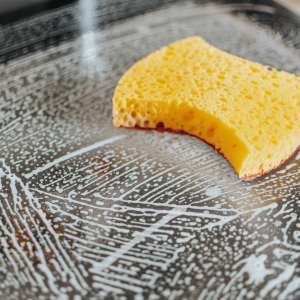
How to Identify and Use These Products
Now, you may be wondering, “How do I spot Linalool in the wild…I mean, in the product ingredients?” Look for words like ‘Lavandula angustifolia’ (that’s Latin for lavender) or ‘Linalool’ itself listed in the ingredients. And don’t fear the chemical-sounding name – remember, Linalool is as natural as they come.
When it comes to using these products, it’s really no different than how you’d normally use them. Shampoo? Lather, rinse, repeat. Cleaning spray? Squirt and wipe.
The key is just being aware that Linalool is there, working its fragrant magic. And who knows? Maybe that awareness will add a little extra joy to your daily routines.
DIY with Linalool: Infusing Your Life with Terpenes
Stepping into the world of terpenes doesn’t have to feel like you’re jumping into the deep end of a very fragrant pool.
With some simple tips and tricks, you can become a home-based mixologist, crafting your own Linalool-infused products.
Guide on How to Incorporate Linalool into Daily Routines
Incorporating Linalool into your daily routine is as easy as spritzing lavender room spray.
Start your day off with a bang by adding a drop of Linalool-rich essential oil into your morning shower for a wake-up call better than any cup of coffee. Swap out your lunchtime soft drink for a Linalool-infused herbal tea, and watch your afternoon productivity soar. Keep a rollerball of Linalool oil at your desk for when stress levels start to rise – one quick roll on your wrists and you’re on a one-way trip to bliss.
Before bedtime, a drop of Linalool essential oil on your pillowcase could be your ticket to the land of dreams – trust us, counting sheep will soon be a thing of the past!
DIY Linalool-Infused Recipes and Project Ideas
Ready to roll up your sleeves and get creative? Here are some DIY project ideas to get you started.
First up, why not create your own Linalool-infused bath bombs? Combine baking soda, citric acid, cornstarch, and Epsom salts. Then mix in your choice of oils (we recommend lavender, of course), and voila! You’ve got yourself a spa-worthy treat for those nights when you need a little extra pampering.
For those who are crafty in the kitchen, a Linalool-infused lavender lemonade could be just the refreshing summer drink you’ve been searching for. Add a few drops of culinary-grade lavender essential oil to your regular lemonade recipe, and elevate your usual lemonade.
Linalool-Infused Cannabis Products
Have you ever taken a whiff of a weed bag and thought, “Hmm, why does this remind me of a floral bouquet?” Well, your nose wasn’t fooling you! It was likely picking up on the subtle notes of Linalool hidden within the more potent cannabis aroma.
Who knew your sniffer was such a terpene detective?
So, which cannabis strains are rich in Linalool? Good question! Some Linalool-rich cannabis strains include Lavender, (well, duh!), LA Confidential, and Amnesia Haze. But keep in mind, while these cannabis strains might be high on Linalool, they also contain other terpenes and compounds.
Debunking Linalool Myths
In the perfume-scented world of terpenes, Linalool is a bit of a celebrity. But like any star, it has a host of myths shadowing its true, undeniably cool, self.
Let’s blow the smoke away and expose the truths hiding behind the Linalool lore.
Common Misconceptions about Linalool
First up in the rumor mill, there’s the one about Linalool being the “sleepy” terpene. Now, we’re not saying Linalool isn’t excellent for sleep, but it’s also not all it’s cracked up to be. Linalool doesn’t just send you off to dreamland; it’s also a social butterfly that helps reduce stress and elevate mood.
Then there’s the myth that all Linalool smells like lavender. Not all superheroes wear capes, and not all Linalool smells like your grandma’s favorite soap. Depending on the plant, Linalool can smell spicy, floral, or even woody. Variety is the spice of life, after all.
Finally, there’s the big one: “Linalool is synthetic.” This couldn’t be further from the truth! Linalool is as natural as sunshine, puppies, and everything else good in this world. In other words, it’s a naturally occurring terpene found in many plants, not just a lab creation.
Evidence-based responses to debunk these myths
Let’s talk science. We’re not pulling these facts out of a magician’s hat; they’re backed by research.
To debunk myth one, studies have shown that Linalool does have anti-anxiety and calming effects, leading to relaxation and potential sleep benefits. However, its effects are more than one-note. It has a range of impacts, including anti-inflammatory, pain relief, and mood-enhancing properties. In other words, Linalool doesn’t just tuck you in at night, it’s got your back during the day too!
As for the lavender confusion, research confirms that Linalool’s scent varies based on its source. So while it might smell like a lavender field in one plant, it could smell like a cinnamon stick in another.
Lastly, the synthetic myth. Yes, Linalool can be synthesized in a lab, but that doesn’t mean it’s not natural. It’s like saying water isn’t natural because it can be made by combining hydrogen and oxygen in a lab. However, Linalool is a plant’s gift to us, no white coats or safety goggles are required.
Conclusion
Let’s take a quick walk down memory lane, shall we?
We’ve worked out way through the world of Linalool, discussing its myriad uses — from jazzing up your daily routines to whipping up some Linalool-infused DIY projects.
We’ve sniffed out the truth behind any Linalool myths and proved that this terpene isn’t just a one-hit wonder. Remember, Linalool is a natural-born superstar, existing freely in nature.
In wrapping up, we hope this blog has helped to transform your view of Linalool from that of a simple ingredient to a versatile, aroma-rich wonder-terpene. That said, don’t just take our word for it! Why not dive into the deep end of this very fragrant pool and experience the magic of Linalool for yourself?
And hey, while you’re at it, you might as well share your new-found knowledge with the world. After all, everyone deserves to know about the multi-talented terpene that’s been hiding in plain sight in their lavender soap.
So go on, share the love (and this article) with your friends, family, and that neighbor who can’t stop talking about his new essential oil diffuser. Spread the word – Linalool isn’t just a fun word to say, it’s a lifestyle!
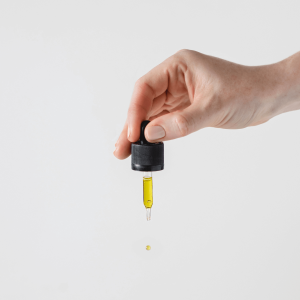
Frequently Asked Questions
What does terpene linalool do?
In simple terms, Linalool plays a key role in giving plants their unique scents. But it’s more than just a pretty smell – it has some serious skills up its sleeve. From creating a sense of calm, helping the Sandman do his thing (a.k.a aiding sleep), to acting as a natural insect repellent – it seems linalool’s potential benefits are like your own personal superhero, swooping in to save the day.
But remember, not all heroes wear capes, some come in a bottle of lavender essential oil! Oh, and did we mention it’s a pro at reducing stress and anxiety too? Needless to say, the linalool terpene effects seem almost endless.
How does linalool make you feel?
Ah, the million-dollar question—how does Linalool make you feel? Linalool is best known for creating a sense of calm and relaxation. It helps to quiet the mind, soothe the soul, and put those jittery nerves at ease.
But it’s not just about rest and relaxation—this powerful terpene is also known to uplift your mood. So, in essence, Linalool is your own personal Zen master, guiding you to a state of blissful tranquility while keeping your brain alive and kicking!
Is linalool indica or Sativa?
Linalool doesn’t play favorites. In fact, no terpenes can be classified as either indica, sativa, or hybrid. So whether it’s a laid-back indica couch session or a zesty sativa morning buzz, Linalool is ready to join the party.
In other words, both indica and sativa cannabis strains can have high concentrations of Linalool. As always, check your strain’s terpene profile to get an idea of its Linalool levels.
What are the side effects of linalool?
Unfortunately, even Linalool’s benefits also come with a few plot twists. While it’s generally super easy-going and well-tolerated, some stoners might experience mild irritation, especially if they have a specific allergy to Linalool.
In very rare cases, high concentrations of Linalool – we’re talking an amount that would put a perfume factory to shame – can cause dizziness, nausea, or even some cloudiness. But remember, these Linalool terpene effects are extremely rare.
However, to keep things cool and comfortable, always start off with a small amount. If you notice any discomfort, take a step back and consult with a professional.

 Rewards
Rewards





